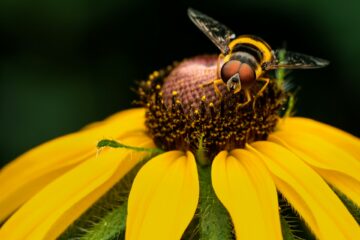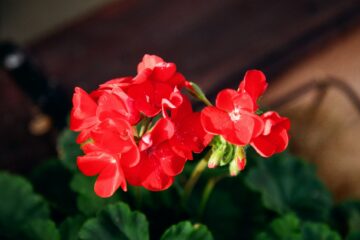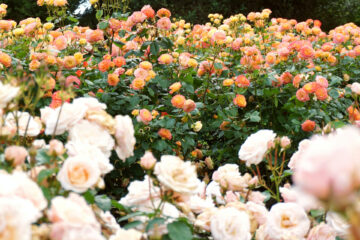Spring is a season of renewal, a time when gardens burst back to life after the quiet dormancy of winter. One of the easiest and most rewarding ways to welcome spring is by planting bulbs in the fall. Bulbs provide some of the earliest and most vibrant colours in the garden, often blooming before many perennials and shrubs awaken. If you’re planning your garden now, choosing the right bulbs will ensure a spectacular show with spring flowering.
In this article, we’ll explore the best bulbs to plant for spring flowering, highlight their growing needs, and offer tips for successful planting and care. Whether you’re a seasoned gardener or starting your first garden project, these bulb recommendations will help you create a colourful and dynamic spring display.
Why Plant Bulbs?
Bulbs are underground storage organs that contain all the nutrients a plant needs to start growing after a dormant period. Planting bulbs in the fall allows them to develop roots before winter and then burst forth with blooms in spring. They often require little maintenance once planted and can flourish with minimal effort.
Bulbs are perfect for adding early-season interest, attracting pollinators, and providing a variety of colors, shapes, and scents. Many bulbs are also deer-resistant and hardy in a range of climates.
Top Bulbs to Plant for Spring Flowering
1. Tulips (Tulipa)
Why Choose Tulips?
Tulips are among the most beloved and iconic spring flowers. Their large, cup-shaped blooms come in nearly every color imaginable, from soft pastels to vibrant reds, yellows, and purples. Tulips also come in many varieties, including single, double, fringed, and parrot styles.
Planting Tips:
- Plant tulip bulbs 6-8 inches deep in well-drained soil.
- Choose a sunny spot for best blooms.
- To encourage flower longevity, avoid planting tulips where bulbs have bloomed previously as they may decline.
- Tulips bloom best if the bulbs experience a cold winter.
- Deadhead spent flowers to prevent seed production and allow the bulb to store energy.
2. Daffodils (Narcissus)
Why Choose Daffodils?
Daffodils are cheerful yellow or white flowers that are easy to grow and naturalize well in many gardens. They’re resistant to deer and rodents and multiply over time, creating a fuller display each year.
Planting Tips:
- Plant bulbs 4–6 inches deep in well-drained soil with full sun to partial shade.
- Avoid disturbing established clumps—they often thrive when left undisturbed.
- They prefer a cool dormant period, so suitable for most temperate climates.
- Remove spent flowers, but allow foliage to die back naturally to feed the bulb.
3. Crocus
Why Choose Crocus?
Crocuses are some of the earliest bloomers, often poking through snow in late winter or early spring. They’re small but provide bright splashes of purple, yellow, white, or striped flowers.
Planting Tips:
- Plant crocus corms 3-4 inches deep and about 3 inches apart in full sun or partial shade.
- They do well in grassy areas and can naturalize to form colorful drifts.
- Because of their small size, it’s best to plant in clusters for visual impact.
- Crocuses prefer well-drained soil.
4. Hyacinths (Hyacinthus)
Why Choose Hyacinths?
Hyacinths are known for their intensely fragrant, dense flower clusters that come in shades of pink, blue, purple, and white. They are excellent for adding scent to your garden or indoor arrangements.
Planting Tips:
- Plant bulbs 6 inches deep in rich, well-drained soil with full sun exposure.
- Hyacinths can be forced indoors for early blooms in pots.
- Deadhead flowers after blooming but keep the foliage until it yellows.
5. Alliums
Why Choose Alliums?
Alliums are ornamental onions that produce globe-shaped clusters of tiny flowers, often in purple, white, or yellow. They add architectural interest and are attractive to pollinators.
Planting Tips:
- Plant bulbs 4-6 inches deep in sunny, well-drained soil.
- Allow at least 4-6 inches between bulbs for good growth.
- They are drought-tolerant once established.
- Leave flower heads through the summer for visual interest and seed dispersal or cut if preferred.
Extra Tips for Planting and Caring for Bulbs
Timing
Plant spring-flowering bulbs in the fall, ideally 4-6 weeks before the first hard frost in your area. This gives bulbs enough time to establish roots before the ground freezes.
Soil and Drainage
Bulbs hate “wet feet.” Well-drained soil is crucial to prevent rot. If your garden soil is heavy clay, amend it with compost or plant bulbs in raised beds or containers.
Sunlight
Most spring bulbs prefer full sun or partial shade. Make sure to observe your garden’s light patterns and plant accordingly for optimal blooming.
Mulching
Apply a layer of mulch after planting to regulate soil temperature and moisture and to protect bulbs from freeze-thaw cycles.
Companion Planting
Consider planting bulbs among slower-growing perennials or ground covers. This allows bulbs to bloom before other plants fill in, maximizing garden space and impact.
Conclusion
Planting spring-flowering bulbs is one of the most gratifying ways to brighten your garden year after year. Tulips, daffodils, crocus, hyacinths, and alliums each offer unique shapes, colors, and fragrances to welcome the warming weather. By choosing the right bulbs and planting them in the fall with care, you set the stage for a breathtaking spring floral display.
So gather your bulbs, prepare your soil, and get ready for a vibrant spring that will lift your spirits and beautify your outdoor space!
Happy gardening!


